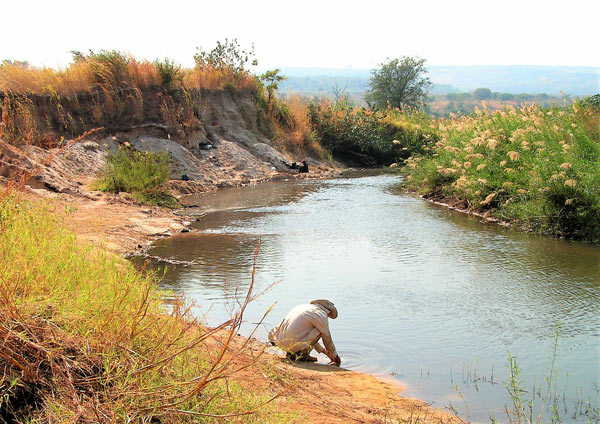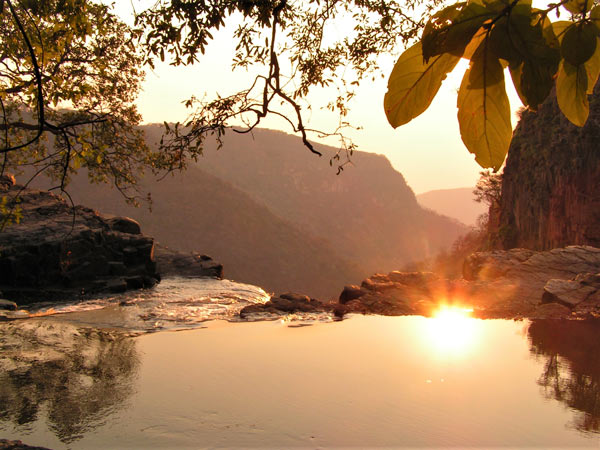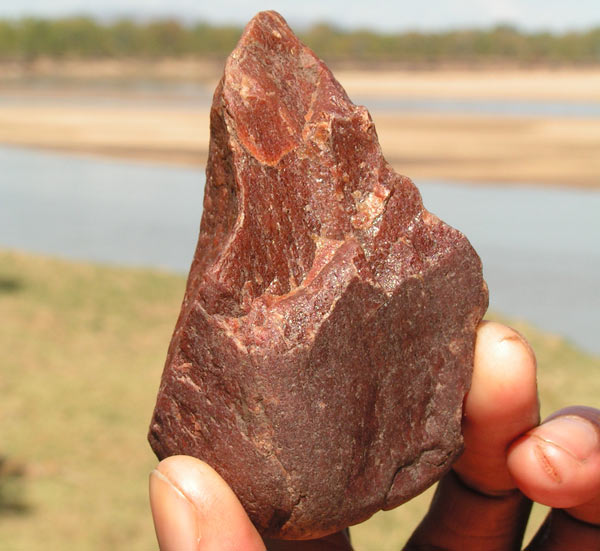
Prof Larry Barham gives us a taste of what it's like to excavate in Zambia, as he heads off to begin new research into early humans and how they made tools.
"This year, our first season of the new Deep Roots research project begins in the dramatic setting of Victoria Falls, a World Heritage site in Zambia, Africa. As soon as term ends and the exams are over - I’ll be on my way.
The rains, which will have ended in April, should have left the Zambezi River full and the falls roaring – which is why the local name for them is ‘Mosi oa Tunya’, the smoke that thunders. (Mosi is also the name of a popular Zambian beer, always welcome at the end of a hot day’s digging.)
Archaeologists at work!
On a recce some years ago I spent a baking morning poking around for stone tools in the rich red sand of a river terrace, some way above the immediate falls area. In Zambia, you’re always dependent on your vehicle – which was off road, miles from the nearest tarmac. In sand.
You guessed. The more I tried to get out the deeper I sank.
I thought I’d been digging somewhere isolated, but no sooner had I become stuck than several people appeared, with shovels, smiles - and muscles.
Shouted instructions, plenty of digging and a few shoves later and we were on our way. And of course I could give them a lift!
Zambians are always ready to help if you break down or get stuck - and rarely expect anything by way of reward – except perhaps a lift. But a gift of biscuits or football magazines is never unwelcome, in my experience.
 Kalambo falls lip at sunset
Kalambo falls lip at sunset
Changing Zambia's understanding of the past
Locals – other than my colleagues in National Heritage, that is - rarely understand why I am digging, especially when they see the results. Zambia is a very conservative, Christian country and often the suggestion that these things go back hundreds of thousands of years is met with incomprehension, or simple disbelief, as a literal belief in biblical creation has for a long time been widespread.
But now human evolution and Stone Age archaeology is being taught in Zambia’s schools – and we are contributing with the latest scientific understanding of the past.
Zambia has deposits of precious stones like emeralds and people usually assume I am seeking these for their value. The stone tools, I have to tell them, are not worth a bean, in the financial sense. They are precious evidence however, of a fundamental change in the way humans thought about tools and made them.
 Luangwa Valley Stone Age pick
Luangwa Valley Stone Age pick
Searching for hand-held tools
We will be looking for artefacts that span the transition from large hand-held tools - probably used for cutting and chopping – to small flakes of stone that were shaped and used as inserts in tools with handles.
The idea of making tools with several different parts is something we take for granted because all our technologies today use this concept, but it had an origin. We want to understand more about when this invention took place and what advantages it offered over long established ways of doing things.
Victoria Falls and the other areas we’ll be investigating over the next four years preserve sequences of artefacts that span the transition from old to new ways of making things. It’s tempting to see parallels with the rapid change from an analogue to digital world, but maybe that’s just me trying to make sense of something big - and sometimes bewildering."